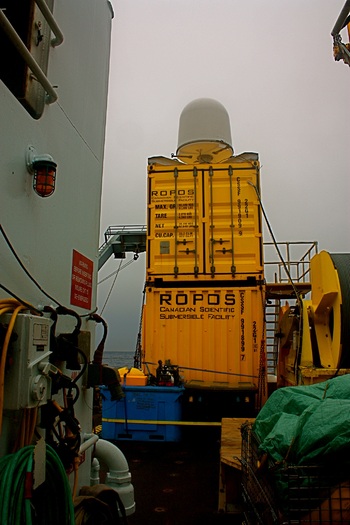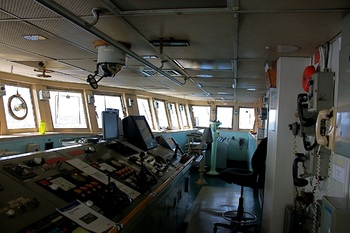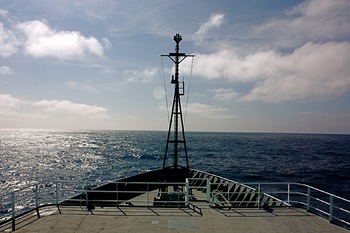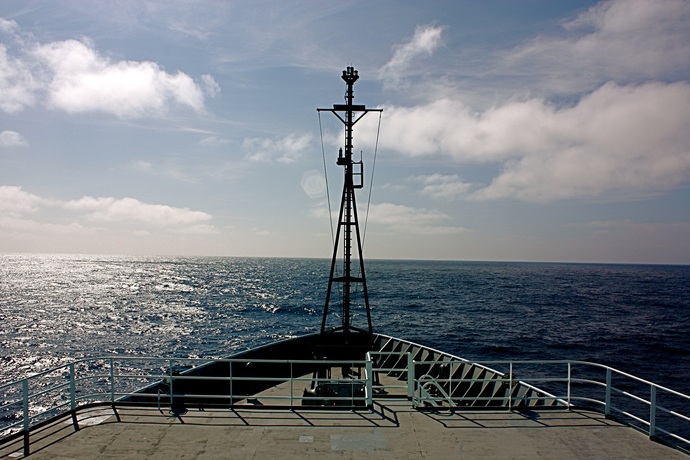I had my second watch today. We covered over 6 km of a cable survey, making sure the cable was in a good position on the seafloor. On my watch it looked great--there were very few places it was tightly stretched at all. But last night, there were huge sections with the cable stretched over obstacles, and even an instance where the cable was laying directly on top of a hydrothermal vent. This will likely significantly lower the lasting age of the cable; sharp basalts and extremely high temperatures are best avoided.
Mostly as the ROV is moving over the seafloor we are seeing a mix of sediment cover and different lava morphologies—pillow basalts, sheet flows, and many collapse features are commonly seen. In addition, we see several different types of sea stars and fish. Today we saw our third dumbo octopus, and I took pictures of several skates on my watch. As a logger, it’s my job to make constant observations on the position of the cable and the changing sediment, basalt, and biota along the way. Visibility is limited as marine snow is constantly floating down in front of the ROV making the sea floor look like a winter storm. The highlight of the live feed, in my opinion, was the amazing footage captured last night of a dumbo octopus—I recently learned about these in a marine biology class and it was thrilling to see one move in real time.
After my watch, I visited the bridge for the best view on the ship. Tonight, I’m hoping to make some more progress on my project. I made some headway this morning with ArcMap, but I still have a ton to learn about how to best present the data.





